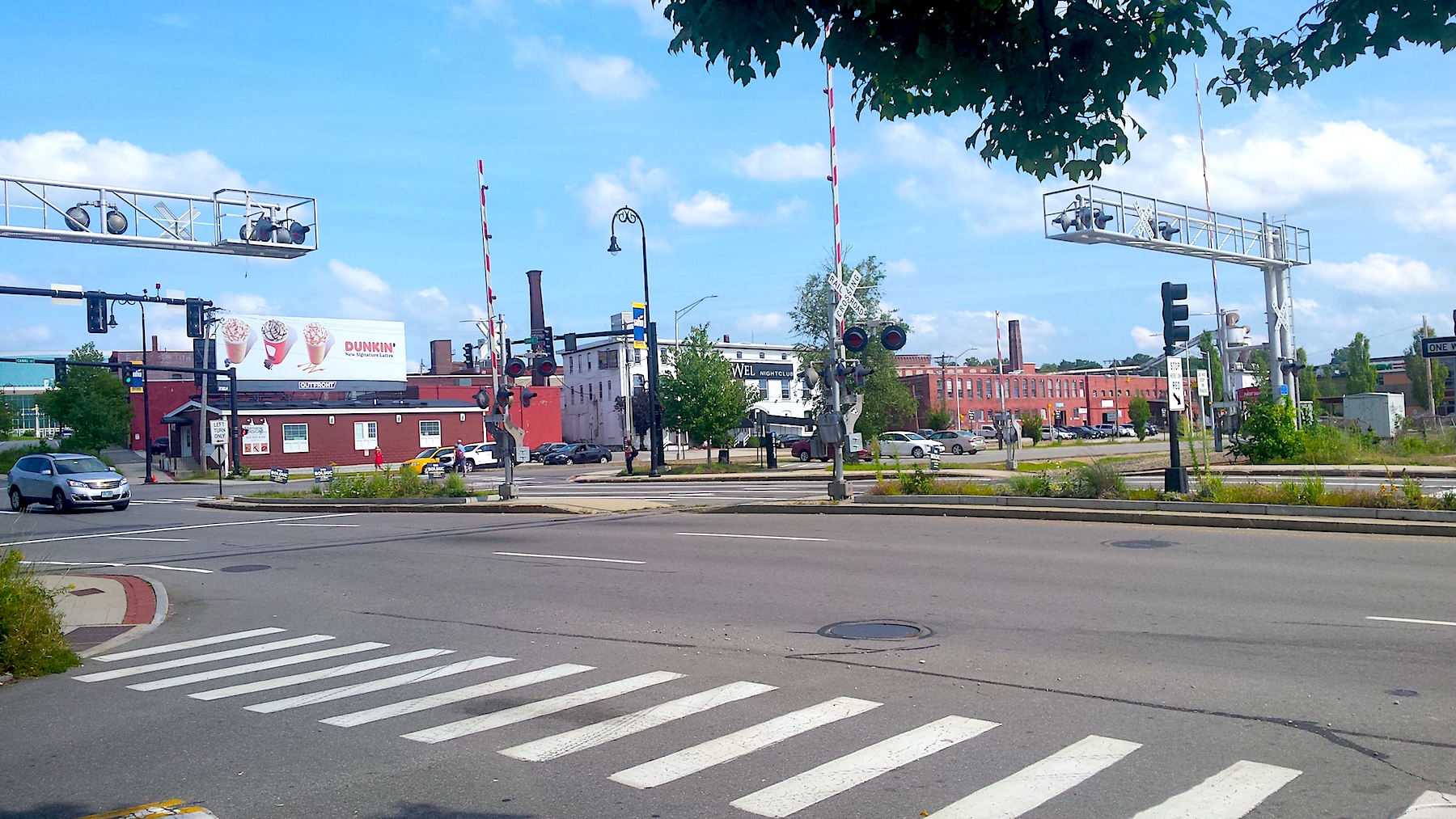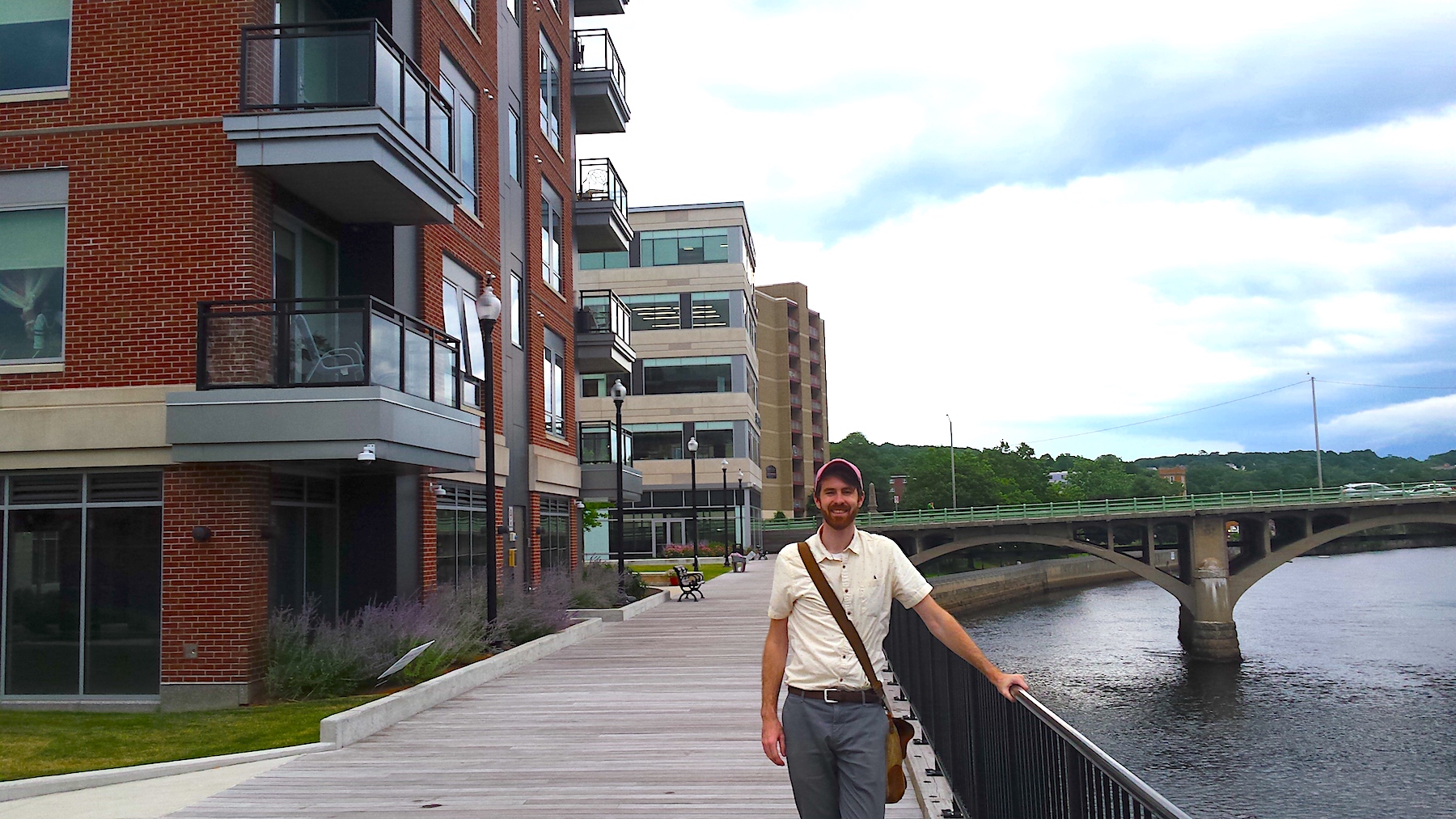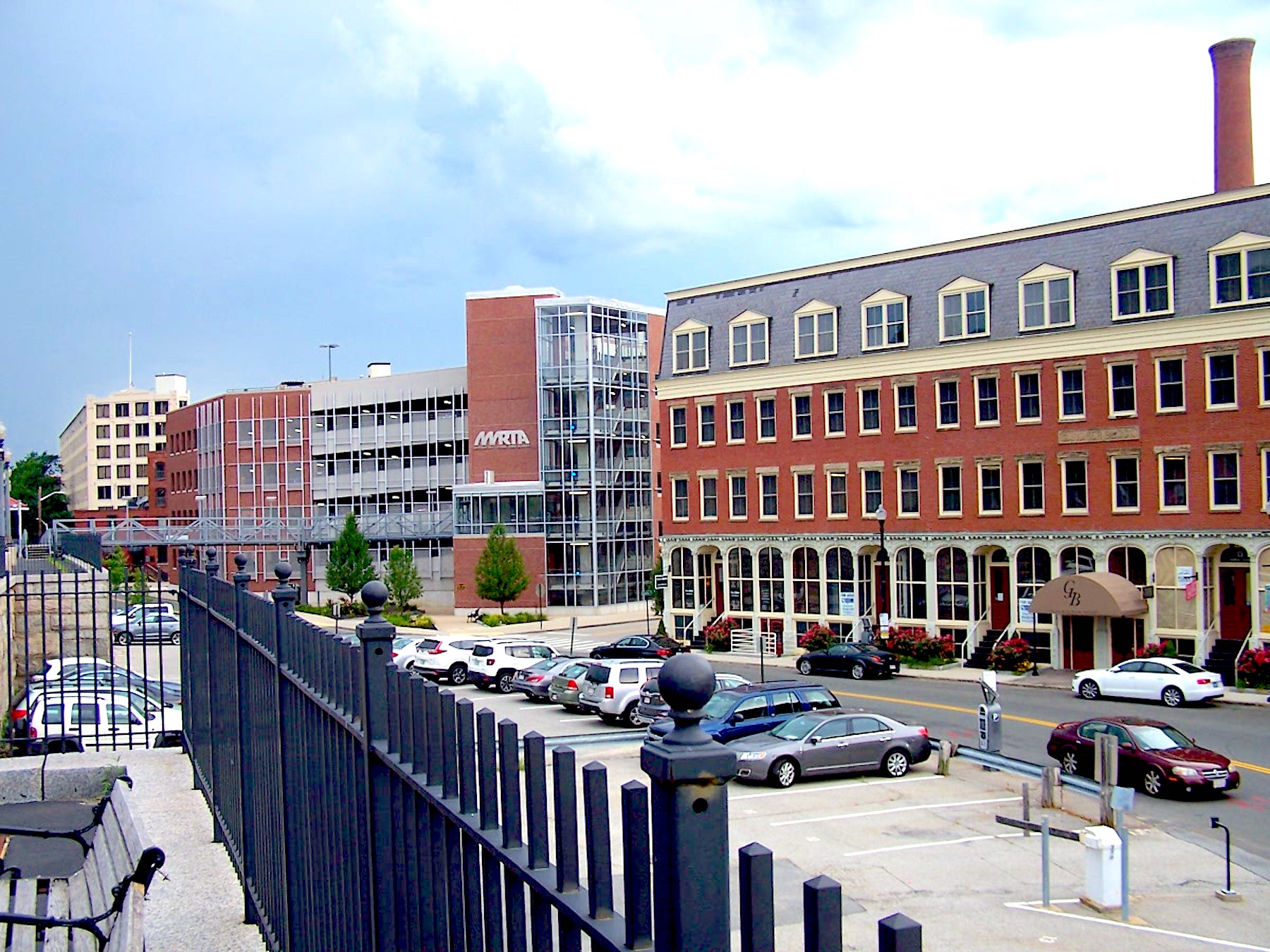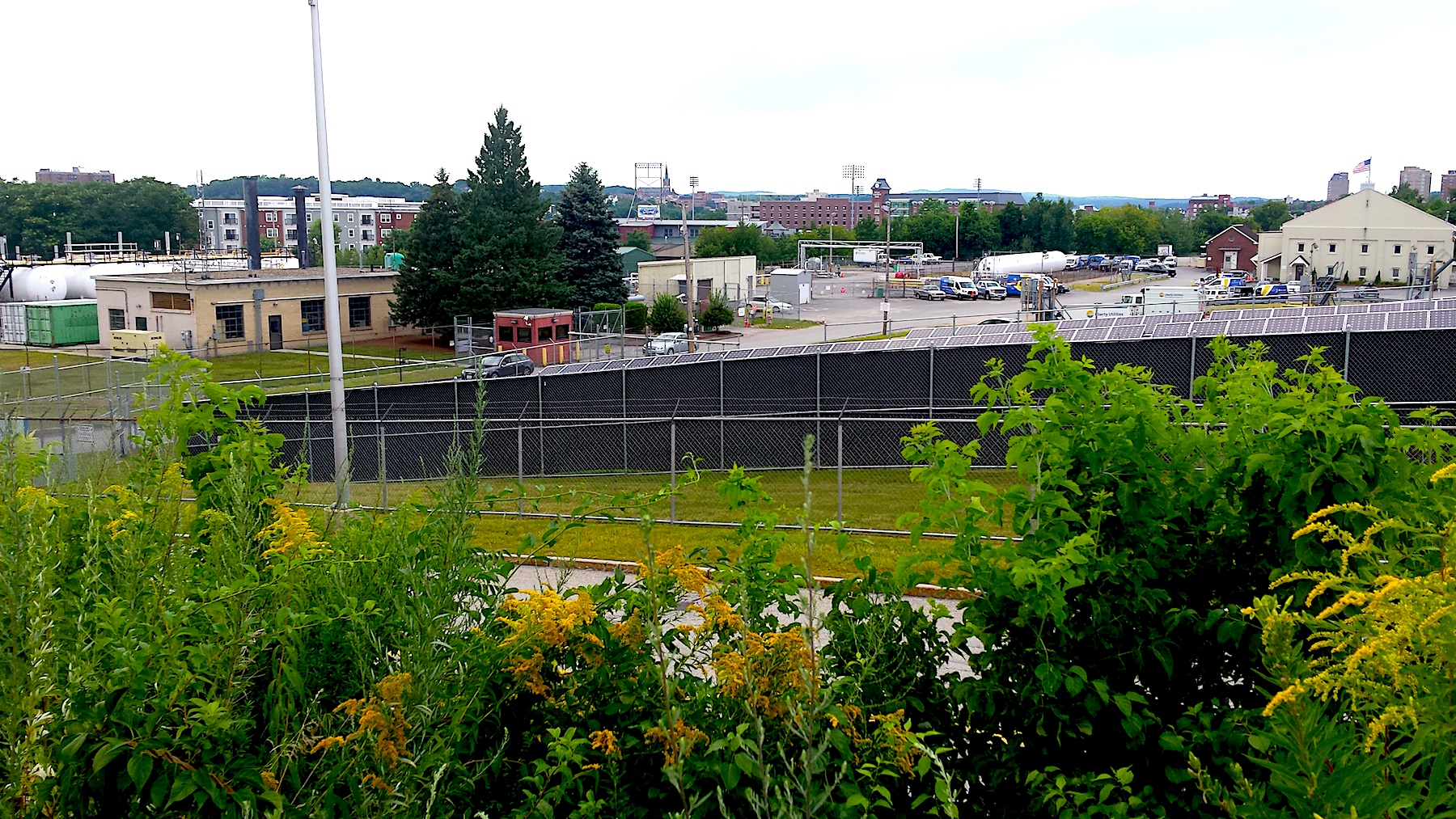
MANCHESTER, NH – The New Hampshire Capitol Corridor Rail Project is back on track. A Senate Bill authorizing the NH DOT to use federal grant money and toll credits to conduct the next phase of the project became law in July without the Governor’s signature. Upon completion of the project regular passenger trains would travel between Boston, Massachusetts and Manchester, with stops in Nashua, the Manchester-Boston Regional Airport, and the Manchester millyard.
Expansion of passenger rail is viewed by urban planners as a potential catalyst for economic development. Proponents say access to public transportation attracts new business, spurs real estate development, and increases property values. The 2014 NH Capitol Corridor Rail Study included some projections that the Manchester Regional Commuter Rail project would generate more than 3,600 new residential units and nearly 2million square feet of commercial space supporting 5,600+ new jobs over a 10 year period. It has the potential to generate 230 new jobs over the construction period, about 3,390 jobs related to new real estate development, and about 1,730 new jobs annually in 2030 and beyond. Real estate development would add $1.2 billion to the state’s output between 2021 and 2030, with reinvested earnings adding $220 million per year beyond 2030.
OTHER STORIES IN THIS SERIES
- What’s the next phase for Capitol Corridor Rail Project?
- Commuter Rail: Drilling down on demand, cost and quality of life
According to EJ Powers of NH Business for Rail Expansion, the best way to imagine how that would look would be to consider the Manchester-Boston Regional Airport. Businesses have located in the area of the airport to take advantage of the ease of transporting goods in and out of the city, but there are also businesses that developed to serve travelers and the people who work at the other companies that are located in the area.
While the millyard is currently home to 30 high-tech companies, Powers says that access to passenger rail service will bring in workers of various skills that will support growth in Manchester’s overall economy.
Transit Oriented Development
In urban planning jargon this kind of development is referred to as Transit Oriented Development (TOD). By definition TOD is a type of development that maximizes the amount of residential, business and leisure space within walking distance of a public transportation hub. The goal is to promote sustainable urban growth by increasing walkability and usage of public transportation, and reduce dependence on private cars.
Dr. Tracy Corley is the Transit Oriented Development Fellow at MassINC. She is currently working with mid-sized cities in Massachusetts that have been designated as Gateway Cities. Several of them are investing in TOD as a way to boost their local economies.
According to Corley, the idea behind it is to build dense, mixed-use neighborhoods within a half-mile of a train station or other transportation hub. Residents are able to walk to stores, restaurants, and cultural amenities in the neighborhood and use public transportation for longer trips. This is good for the environment because it reduces dependency on private vehicles and fossil fuels, but it is especially beneficial for young workers and low-income residents. The existence of commuter rail and other forms of public transportation gives them access to higher paying jobs, and educational and cultural opportunities, without the debt burden of owning and maintaining a car.
Corley says that most commuter rail lines have been designed to move people from lower density suburbs into a central metropolitan area during commuting hours. That is changing now to include trains that run between smaller cities like those in the Gateway program. “It is important that the trains run frequently throughout the day to give residents access to jobs and cultural amenities. Just having a giant shuttle is not how people want to live,” she says. It is also important that the service be bi-directional. Young people who don’t want to drive are more willing to live and work in smaller urban areas if they can access the city for cultural and social opportunities.
Haverhill

One of the Gateway cities that Corley is working with is Haverhill, Massachusetts. A 19th Century industrial city on the Merrimack River with about 60,000 residents, it was known primarily for shoe manufacturing. Like many older industrial cities it was originally built with pedestrians in mind. It has a compact downtown with a rail station at one end and lots of industrial buildings. In addition to its proximity to Route 495, the city is served by the Amtrak Downeaster and MBTA commuter rail.
During the last decade, the city has worked to change zoning laws, leverage state and federal funding sources, and actively pursue the conversion of the downtown and industrial areas into mixed-use development. To get an idea of what TOD looks like we took a tour of the city with Nate Robertson from Merrimack Valley Planning Commission. We started in a newly opened coffee shop on Washington Street in a cohesive neighborhood of 1880s commercial buildings about a block from the railroad station.

Standing on the sidewalk Robertson gestures at the occupied storefronts with newly renovated apartments above and says, “ This is the section of our Main Street that escaped urban renewal. There was very little interest until recently. Most of these buildings were boarded up five years ago. We are seeing a lot of restaurants and hair salons moving in. It’s mostly the kinds of goods and services you can’t get on Amazon.”
From the coffee shop we head to the train platform. The Downeaster makes an appearance while we are standing there. Robertson says he takes the train to Boston frequently and enjoys the convenience. We walk through the MBTA parking garage to a construction site where an eight-story industrial building is being converted into housing. He tells me, “A year ago this was all boarded up. You wouldn’t recognize it as the same place.”
Robertson estimates that with all the development they have added about 700 units of housing.
Farther down the street he shows me another old mill building that has been converted into housing. This one is 80 percent market rate and 20 percent affordable units. The developer was able to get federal Low Income Housing Tax Credits for the project by allocating a certain percentage for low-income residents.

When developers come in to established neighborhoods, residents are often concerned about gentrification. Dr. Corley notes, “Gentrification isn’t necessarily a bad thing. Improving neighborhoods benefits all residents. The real issue is displacement. That is why it is important to make sure that new projects are mixed-use and accommodate economically diverse residents.”
Standing on the riverside boardwalk, where several people come by with their dogs, Robertson says that one particular group they see moving into the city is the “empty nesters.” They are older people who are leaving the suburbs and looking for a more urban lifestyle, but they aren’t interested in moving to a large metropolitan area. Haverhill is compact and convenient and less intimidating.
What is next for downtown Haverhill? A few yards from us the boardwalk is blocked off by a fence. On the other side is the construction site for The Heights, a brand new, 10-story, multi-use building on the Merrimack River. It will house retail on the lower floors, a restaurant and function facility on the top floor, and 42 luxury apartments on the middle floors. The developer is also negotiating with Northern Essex Community College to relocate their culinary program to the new building. The project is very ambitious and Robertson is eager to see how it turns out.
Manchester Possibilities
In Manchester’s case the transportation hub would be a passenger rail station in the area of Canal and Granite streets. In the same area there is a bus station for intercity buses, a highway exit just across the bridge, and a nearby rail trail.
Even if everything moves forward without a single setback, it will be five or six years before the first passenger train arrives at the station in Manchester, but development in the area has already begun. Development of housing, increasing numbers of businesses locating in the millyard, and cultural facilities like the SNHU Arena and Fisher Cats Stadium have created transportation challenges in the area. EJ Powers notes,”We are facing capacity issues. To facilitate and further that growth we need to look at other options for getting workers, visitors, and residents in and out.”

SNHU employs 500 people who commute from Massachusetts. They just built a 1,700 space parking garage which addresses a long-standing parking shortage. However, this has led to concerns about traffic on Granite Street, so the city has applied for a federal grant to create a pedestrian bridge over Granite Street and put in a new street connecting South Commercial Street and Elm Street through an old railroad right of way.
With the potential for significant additional development to occur in the area, Southern New Hampshire Planning Commission and the NH Department of Transportation have identified the area bounded by Granite Street, Elm Street, Queen City Avenue, and Second Street for a thorough comprehensive Transit Oriented Development Plan.
Funding for the project was included in the cost of the I-93 widening project to plan for potential growth and development that might occur as a result of that project, and granted to Southern New Hampshire Planning Commission as part of their Community Technical Advisory Program.
According to project manager James Vayo the goal of the project is to identify and evaluate what is currently within the designated area and work with the community to map out a vision for how the area might be developed. The resulting report will help the city determine what kind of upgrades and zoning changes will be necessary to set the stage for successful development of the area.
Vayo says, “We are going to go in and look at existing transit infrastructure including rail, automotive, bicycle, and pedestrian. We’ll also be evaluating historic resources, identifying any potentially contaminated areas, and mapping out existing sewer, water and utility infrastructure. All that information goes into a report that will be sent to the city planning department.”
They have also contracted with the planning consulting firm Goody Clancy, who will assist with the project. Working with the community they will develop several alternative plans for how the area could be re-developed. A kick-off meeting will be held in the coming months to begin the process of gathering input from the public.
According to Vayo it is hard to predict what the alternatives might look like.
“Identified alternatives might be entirely residential, or mixed-use or include a remote parking lot with some kind of shuttle or people mover to get people to jobs in the millyard. We won’t know until we go through the process,” Vayo said.
This TOD planning project coincides with the City of Manchester’s 10-Year Master Plan process which is just beginning. Vayo will be manning a table at the scheduled Planapalooza scheduled for September 12-17 to answer questions and gather input regarding the TOD plan.
Kathy Staub can be reached at kschofieldstaub@gmail.com







